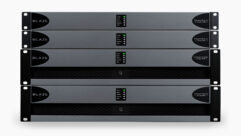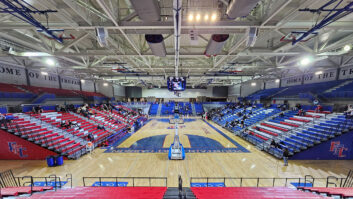

To avoid problems when installing an AV device into an IP network, it is prudent to carefully consider the procedure the device uses when it connects to that network. Certain parameters are required to communicate with other devices. These are sometimes acquired automatically or may be configured manually.
Let’s begin our study with what the device must know. It must have a local hardware address for its physical interface to the network. This 48 bit mac address is assigned by the manufacturer of the interface and inserted at the factory. Messages are always sent from device address to device address. Also, the device will usually need an IP address, a subnet mask, and a local router’s IP address. Let’s say the manufacturer shipped your device configured to get these parameters automatically. This will be done using DHCP (Dynamic Host Configuration Protocol). When the device is powered up, it will send a broadcast DHCP request on the local network asking for a configuration assignment. The response will come from a local DHCP server. Often, this server is installed in the local router. With a broadcast reply, the server will tell your device its IP address, subnet mask, and the router’s IP address. Some systems use the DHCP server to deliver other key resource servers such as a call manager, DNS server, or authentication server. Note that the DHCP request is sent as a local broadcast. This means the DHCP server must be on the same local subnet as the device, since broadcasts normally don’t pass through routers to other networks.
If your device isn’t configured to use DHCP, you must manually configure its IP address, subnet mask, and local router IP address. If the web is to be used for communications, you’ll have to insert a DNS server address. With one of the parameters, you should exercise caution. Make sure that you correctly pick the subnet mask. There is a tendency for installers to simply use 255.255.255.0. That is a common mask. However, it may be that the other devices on your network are using a different mask such as 255.0.0.0 or 255.255.255.192. If you use a mask that doesn’t match the rest of the devices on your network, you may pay a severe penalty in troubleshooting time while you have to detect why certain devices can communicate with their partners, while others can’t.
Some networks have devices attached that don’t have a local router address. In other words, they are configured with only an IP address and a mask. In such a design, communications with devices on other networks or the Internet is impossible. In some cases, devices discover their configuration automatically though a proprietary protocol. This happens with some audio devices. IP addresses aren’t necessary because all messages are sent on the local network station to station. These devices likewise cannot communicate with devices on other networks or use the Internet. Troubleshooting such systems can be difficult because common tools such as ping and tract route won’t work.










